Experiments in Reverse PerspectiveWritten by Paul BourkeJuly 2020
Sindhi translation by Samuel Badree
By way of introduction, consider the model of a virtual camera in computer graphics and a 3D object, a cube say. The two key parameters that determine the size of the object on the projection plane of the camera is the position of the camera with respect to the object and the field of view of the camera. Both of these can be adjusted so as to control how large the object appears on the project plane, a bounded region of this plane being the resulting image. The closer the camera is to the object the larger the field of view needs to be in order for the object to fill the image plane. If the camera is a long way from the object then a smaller field of view is required in order to fill the image plane with the object. Imagine then, starting with the camera close to the object with a large field of view. In this position the effects of perspective, the degree to which distant parts of the object appear smaller than the closer parts will be the most pronounced. As the camera is moved away and field of view reduced in order to keep the object at the same size in the frame, the effects of perspective reduce. At the limit with the camera at infinity, the field of view can be imagined to be zero, there are no perspective effects and we say the projection is orthographic or parallel. 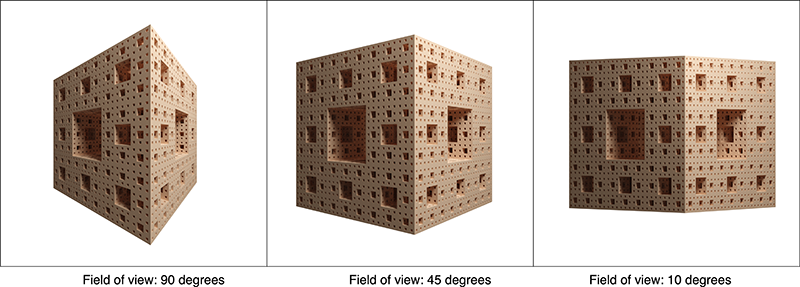
Can this process somehow be continued so that perspective effects are reversed, that is, parts of the object closest to the camera appear smaller than those parts of the object further away from the camera? The answer is yes, it is called reverse or inverted perspective and is the topic of this discussion. In what follows various examples will be presented. In each case the objects are rendered three times, as a standard perspective (P > 0), orthographic (P = 0) and finally reverse perspective (P < 0). The first three show the cube above with a 1, 2 and 3 point perspective. Single point
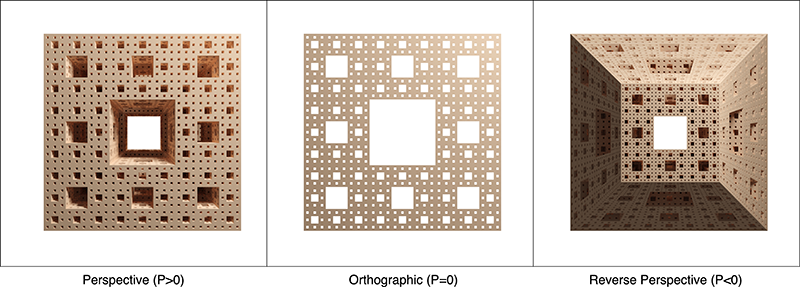
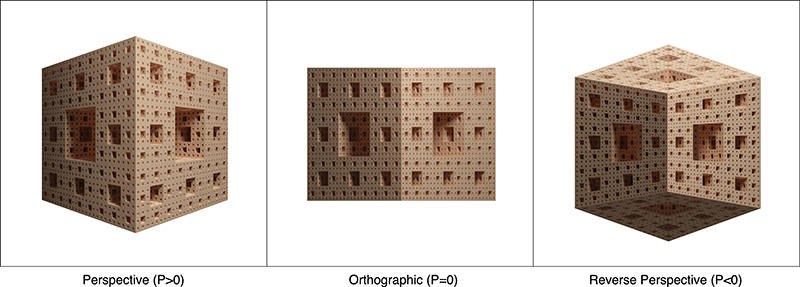
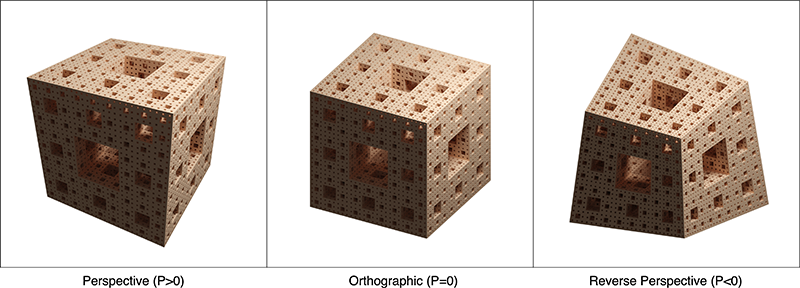
Another way to think about this is to consider the degree to which parts of an object are scaled as a function of their distance from the camera. In the following imagine the camera on the negative z axis looking towards the origin. The relative scaling between the closest part of the object and the furthest part of the object is shown for the three projections considered here. Note that instead of the closest and furthest parts of the objects one might also use the near and far cutting plane of the view frustum. Note this is a clue for a OpenGL/DirectX implementation using a vertex shader. 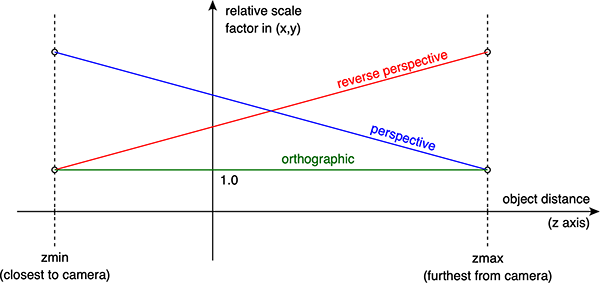


For those familiar with the construction of perspective in traditional drawing or architecture, reverse perspective is constructed by placing the object/scene between the projective point and the viewing/drawing plane. Compared to traditional linear perspective construction where the projective point is on the opposite side of the viewing plane to the object or scene. 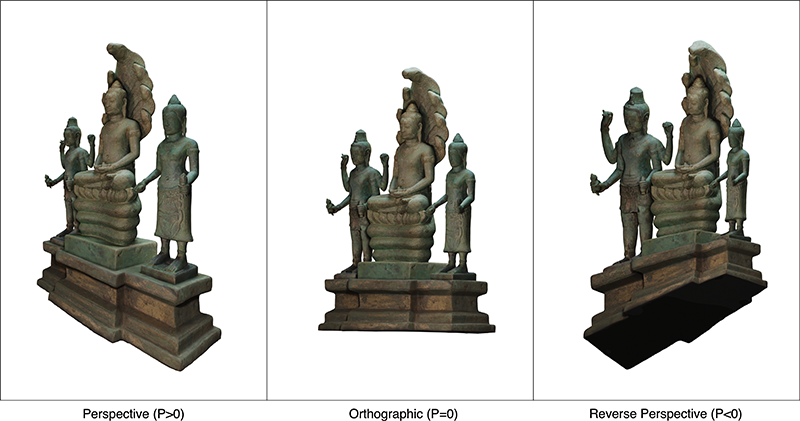
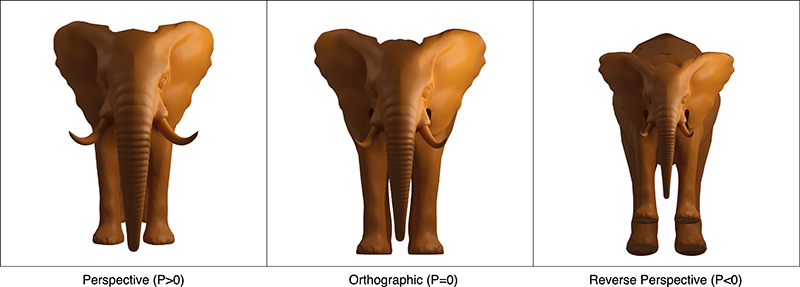
The following gives an idea of what happens to heads, as the reverse perspective factor increases one sees more and more of the parts of the head normally obscured. This is characteristic of many of the heads from reverse perspective in Byzantine paintings. 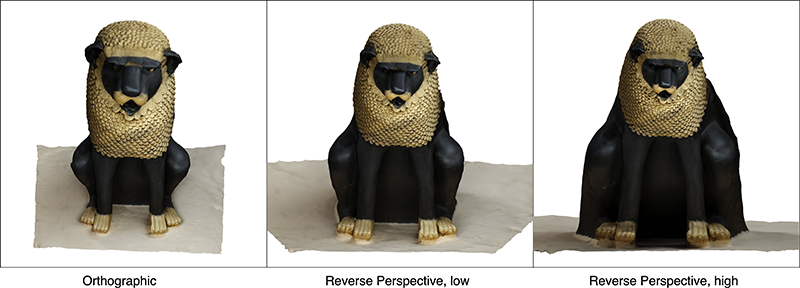
There are many examples of reverse perspective in historical art. However they are not necessarily constructed in the sense used here, namely that lines of projection diverge with distance so that more distant objects appear larger. For example, in some cases the larger distant objects are due to an anamorphic projection so that size appears correct if one is standing in the "correct" position, the so called reverse perspective only occurs for other viewing positions. Another set of apparent reverse perspectives can be attributed to distant figures being larger due to their increased importance. 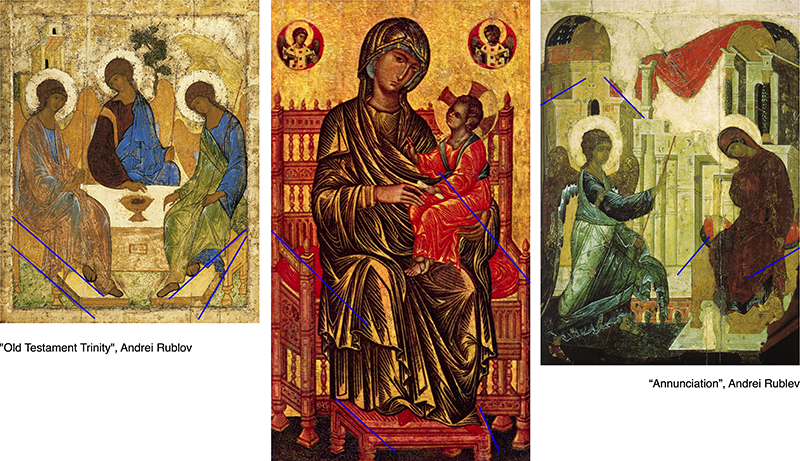
A couple of often quoted examples of reverse perspective are illustrated above, but there is some debate as to whether that was the intent or whether what looks like reverse perspective just arose due to a lack of consideration of current perspective combined with compositional objectives. While some examples of lines vanishing on the same side of the viewer are drawn, there are other aspects that are not consistent with reverse perspective. With regard to Russian and Byzantine religious iconography, Pavel Florensky writes.
References
|